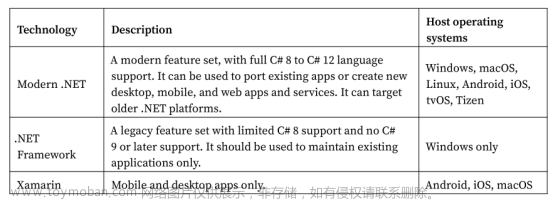核心问题之一
机器学习中的一个核心问题是设计不仅在训练数据上表现好,而且能在新输入上泛化好的算法
设计一个在训练数据上表现好且能在新输入上泛化好的算法是机器学习的一个核心问题。泛化能力是指模型在没有见过的新数据上的预测能力,它是评估模型真正的实用性的重要指标。如果模型只能在训练数据上表现好,而无法适应新数据,那么它在实际应用中的效果将是不可靠的。
为了提高算法的泛化能力,以下是一些常用的方法和策略:
- 数据集划分:将数据集划分为训练集、验证集和测试集是一种常用的方法。训练集用于模型训练,验证集用于模型调参和选择最佳模型,测试集用于最终评估模型的泛化性能。合理的数据集划分能够评估模型在真实场景下的表现。
- 特征选择和提取:选择对问题有用的特征和提取有意义的特征对于提高模型的泛化能力至关重要。有效的特征选择和提取可以减少输入空间的维度,并且更好地表示输入数据的关键信息。
- 正则化:通过引入正则化项,如L1正则化和L2正则化,可以避免模型过拟合训练数据,促进模型对新数据的泛化能力。正则化可以限制模型的复杂性,使其更简单且具有更好的泛化能力。
- 模型选择和调参:选择合适的模型架构和超参数设置对于泛化能力至关重要。通过尝试不同的模型和调整超参数,可以找到最佳的模型配置,使其在新数据上表现更好。
- 数据增强和正负样本平衡:通过数据增强技术(如旋转、缩放、翻转等)引入多样性,增加训练数据量以提高模型的泛化能力。同时,在处理不平衡的分类问题时,可以通过过采样和欠采样等方法平衡正负样本的分布。
- 集成学习:通过将多个模型的预测结果进行集成,可以提高模型的泛化能力。常见的集成方法包括投票法、平均法、堆叠法等。
以上方法和策略旨在减少模型的过拟合现象,使其能够更好地适应新数据并具有较好的泛化能力。
摘要
以一个简单的线性回归算法为例来说明如何通过指定优化过程、代价函数和模型族来构建一个机器学习算法。
- 定义优化过程:我们将使用梯度下降作为优化过程来更新模型参数。梯度下降是一种迭代方法,通过计算代价函数的梯度,并按照梯度的方向更新模型参数,使代价函数逐步减小。
- 定义代价函数:在线性回归问题中,我们可以选择使用均方误差损失(Mean Squared Error,MSE)作为代价函数。MSE表示模型预测值与实际值差的平方的均值,以衡量预测误差的大小。
- 定义模型族:对于线性回归问题,我们可以选择线性模型族,其中包含了所有线性方程的模型。线性回归模型可以用以下形式表示:Y = wX + b,其中Y是预测值,X是输入特征,w和b是要学习的模型参数。
- 进行训练和优化。
- 首先,我们需要收集带有标签的训练数据集,包括输入特征X和对应的目标值Y。
- 其次,为了训练模型,我们需要初始化模型参数w和b。
- 然后,我们可以使用梯度下降法迭代更新模型参数,使得代价函数最小化。具体地,我们可以计算代价函数关于模型参数的梯度,并按照梯度的方向和学习率更新模型参数。
- 最后,重复上述步骤,直到达到一定的停止条件(例如达到最大迭代次数或梯度的变化非常小)。
相关概念
混淆矩阵
Confusion Matrix是一种用于衡量分类模型的性能的工具。它是一个2x2的矩阵,其中每行代表了真实标签的分类,每列代表了模型预测的分类。这个矩阵用于计算模型的准确性、精确性、召回率和F1得分等指标。
在Confusion Matrix中,通常将真实标签的正类(Positive Class)表示为P,将负类(Negative Class)表示为N。根据模型对样本的预测结果,可以将样本分为以下四个类别:
真正例(True Positive, TP):预测为P且实际为P。
假正例(False Positive,FP):预测为P但实际为N。
真反例(True Negative,TN):预测为N且实际为N。
假反例(False Negative,FN):预测为N但实际为P。
通过Confusion Matrix可以计算出以下性能指标:
准确性(Accuracy):预测正确的样本数占总样本数的比例((TP+TN)/(TP+FP+FN+TN))。
精确性(Precision):所有预测为正例的样本中,实际为正例的比例(TP/(TP+FP))。
召回率(Recall):所有实际为正例的样本中,被正确预测为正例的比例(TP/(TP+FN))。
F1得分(F1-Score):综合考虑了精确性和召回率的指标,计算公式为2 * (Precision * Recall) / (Precision + Recall)。
Confusion Matrix的分析可以帮助我们了解分类模型的性能,并根据需要进行模型的调整和改进。
泛化、欠拟合、过拟合、偏差、方差和正则化
- 泛化(Generalization):泛化是指模型在未见过的新数据上的表现能力。一个好的模型应该能够在训练数据之外的新数据上进行准确预测,即具有较强的泛化能力。
- 欠拟合(Underfitting):欠拟合指模型无法在训练数据上表现良好,也无法很好地适应新数据。欠拟合通常是因为模型过于简单,不能捕捉到数据的复杂特征和模式。
- 过拟合(Overfitting):过拟合指模型过度拟合训练数据,导致在新数据上的泛化性能较差。过拟合通常是因为模型过于复杂,过度学习了训练数据的噪声和细节。
- 偏差(Bias):偏差是指模型预测与真实值之间的平均差异。高偏差意味着模型无法捕捉到数据的复杂性,导致欠拟合。
- 方差(Variance):方差是指模型预测在不同训练集上的差异度量。高方差意味着模型对训练集的细微变化很敏感,导致过拟合。
- 正则化(Regularization):正则化是一种约束模型复杂性的技术,旨在防止过拟合。通过引入正则化项,例如L1正则化和L2正则化,可以限制模型参数的大小,使模型更简单且泛化能力更好。
理解和平衡这些概念对于设计和优化机器学习模型至关重要。在实践中,常常需要认识到偏差和方差之间的权衡,并使用合适的正则化技术来控制模型的复杂度,以达到更好的泛化性能。
Python举例
以下是一个使用Python实现的线性回归示例代码:
import numpy as np
# 定义优化过程:梯度下降
def gradient_descent(X, y, w, b, learning_rate, num_iterations):
m = len(y) # 训练样本数
for i in range(num_iterations):
# 计算模型预测值
y_pred = np.dot(X, w) + b
# 计算代价函数的梯度
dw = (1/m) * np.dot(X.T, (y_pred - y))
db = (1/m) * np.sum(y_pred - y)
# 更新模型参数
w = w - learning_rate * dw
b = b - learning_rate * db
return w, b
# 定义代价函数:均方误差
def mean_squared_error(y_pred, y):
return np.mean((y_pred - y) ** 2)
# 定义模型族:线性回归模型
class LinearRegression:
def __init__(self):
self.w = None
self.b = None
def fit(self, X, y, learning_rate, num_iterations):
n_features = X.shape[1] # 特征数
self.w = np.zeros(n_features) # 初始化参数w
self.b = 0 # 初始化参数b
# 使用梯度下降进行训练和优化
self.w, self.b = gradient_descent(X, y, self.w, self.b, learning_rate, num_iterations)
def predict(self, X):
return np.dot(X, self.w) + self.b
# 使用示例数据训练模型
X_train = np.array([[1, 2, 3], [4, 5, 6], [7, 8, 9]]) # 输入特征
y_train = np.array([6, 12, 18]) # 目标值
lr = LinearRegression()
lr.fit(X_train, y_train, learning_rate=0.01, num_iterations=100)
# 使用训练好的模型进行预测
X_test = np.array([[2, 3, 4], [5, 6, 7]]) # 测试样本
y_pred = lr.predict(X_test)
print(y_pred)
以上代码中,我们定义了一个LinearRegression类作为线性回归模型族的实现。在fit方法中,我们使用梯度下降方法进行训练和优化,而在predict方法中,我们使用学习到的模型参数进行预测。
希望这个示例能够帮助您理解如何通过指定优化过程、代价函数和模型族来构建机器学习算法。
On the other hand
Let’s start with a simple and beginner-friendly explanation of how to build a machine learning algorithm.文章来源:https://www.toymoban.com/news/detail-686939.html
- Define the problem: Begin by understanding the problem you want to solve using machine learning. Clearly define your problem statement, such as predicting housing prices based on features like location, size, etc.
- Gather and preprocess data: Collect relevant data for your problem statement. Ensure that your data is clean, complete, and representative of the problem you are trying to solve. Preprocess the data by handling missing values, normalizing or scaling features, and encoding categorical variables.
- Split the data: Split your data into two subsets: the training set and the test set. The training set will be used to train your model, while the test set will be used to evaluate its performance.
- Select a model: Choose an appropriate machine learning model based on the type of problem you are solving. For example, for a regression problem like predicting housing prices, you can use Linear Regression, Decision Trees, or Random Forest.
- Train the model: Feed your training data into the chosen model and allow it to learn the patterns and relationships between the features and the target variable. The model will adjust its internal parameters based on the data provided.
- Evaluate the model: Use the test set to assess how well the trained model performs on unseen data. Common evaluation metrics for regression problems include mean squared error (MSE), root mean squared error (RMSE), and R-squared.
- Fine-tune the model: If the model performance is not satisfactory, you can fine-tune it by adjusting hyperparameters or trying different algorithms. Hyperparameters are settings that are not learned from the data but affect the learning process.
- Deploy the model: Once you are satisfied with the model’s performance, you can deploy it to make predictions on new, unseen data. This can be done using various deployment methods, such as creating a web application, an API, or embedding the model into a software system.
- Monitor and iterate: Continuously monitor the performance of your deployed model and collect feedback from users or real-world data. This feedback can be used to improve and iterate upon your model and its predictions.
Remember, this is a simplified overview, and the actual process may vary depending on the complexity of the problem and the specific machine learning algorithms used. However, these steps provide a basic framework to get started with building a machine learning algorithm.文章来源地址https://www.toymoban.com/news/detail-686939.html
到了这里,关于构建机器学习算法简要说明的文章就介绍完了。如果您还想了解更多内容,请在右上角搜索TOY模板网以前的文章或继续浏览下面的相关文章,希望大家以后多多支持TOY模板网!












